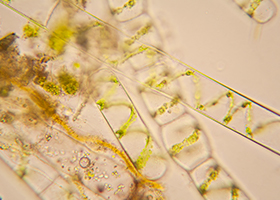- 3.4Impact Factor
- 4.9CiteScore
- 30 daysTime to First Decision
Industrial Cultivation of Microalgae: Technologies, Applications and Challenges
Special Issue Information
Dear Colleagues,
Industrial applications of microalgae are constantly growing, and research is fervent. However, many issues remain uncovered that may hinder an efficient technological transfer from academia to the world of production. What are the future applications of microalgae? Fuel, food, nutraceuticals, wastewater, agriculture are some amazing possibilities, but upscaling is still limited. Can the modeling approach help to overcome the several issues related to photosynthetic efficiency? How do the operating conditions affect the productivity? Is artificial light a sustainable alternative?
This Special Issue of ChemEngineering aims at updating our knowledge about technological and research advancements in this field.
Modeling and experimental manuscripts, as well as reviews dealing with the most significative microalgal-related processes and operations, are particularly welcome.
Dr. Eleonora Sforza
Guest Editor
Manuscript Submission Information
Manuscripts should be submitted online at www.mdpi.com by registering and logging in to this website. Once you are registered, click here to go to the submission form. Manuscripts can be submitted until the deadline. All submissions that pass pre-check are peer-reviewed. Accepted papers will be published continuously in the journal (as soon as accepted) and will be listed together on the special issue website. Research articles, review articles as well as short communications are invited. For planned papers, a title and short abstract (about 250 words) can be sent to the Editorial Office for assessment.
Submitted manuscripts should not have been published previously, nor be under consideration for publication elsewhere (except conference proceedings papers). All manuscripts are thoroughly refereed through a single-blind peer-review process. A guide for authors and other relevant information for submission of manuscripts is available on the Instructions for Authors page. ChemEngineering is an international peer-reviewed open access monthly journal published by MDPI.
Please visit the Instructions for Authors page before submitting a manuscript. The Article Processing Charge (APC) for publication in this open access journal is 1600 CHF (Swiss Francs). Submitted papers should be well formatted and use good English. Authors may use MDPI's English editing service prior to publication or during author revisions.
Keywords
- growth modeling
- process simulation
- microalgal downstream
- artificial light
- industrial application of microalgae

Benefits of Publishing in a Special Issue
- Ease of navigation: Grouping papers by topic helps scholars navigate broad scope journals more efficiently.
- Greater discoverability: Special Issues support the reach and impact of scientific research. Articles in Special Issues are more discoverable and cited more frequently.
- Expansion of research network: Special Issues facilitate connections among authors, fostering scientific collaborations.
- External promotion: Articles in Special Issues are often promoted through the journal's social media, increasing their visibility.
- e-Book format: Special Issues with more than 10 articles can be published as dedicated e-books, ensuring wide and rapid dissemination.

